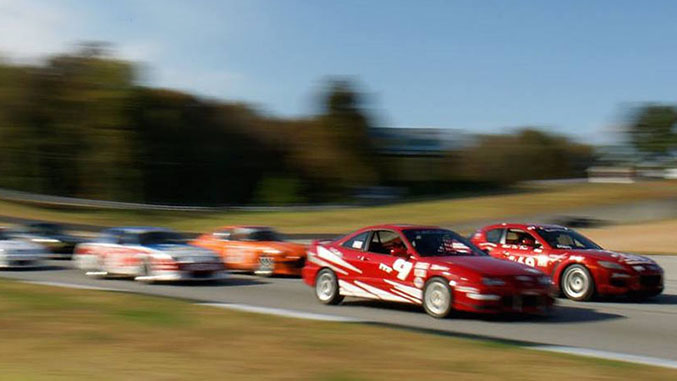The SCCA has announced a rather interesting new Bracket Enduro racing format. Set to run on a limited basis in 2015 with a more substantial rollout for the 2016, it’s been designed to offer a less restrictive set of rules for both drivers and cars, along with a unique scoring system that’s intended to make the format more accessible, and more fun, for newcomers and experienced teams alike.
The new format was conceived to address the issue faced by racers who’ve discovered their cars no longer fit well in the established sprint racing classes, allowing eligible cars to compete – regardless of how they are setup – without requiring teams to make big investments to run competitively within the program.
“We really wanted to build a program that made endurance racing truly affordable, but at the same time without limiting what people could spend,” Heyward Wagner, SCCA Director of Experiential Programs, said. “As we looked across the motorsports landscape, we found what we were looking for in a variation of the bracket racing model commonly used in drag racing.”
That last part is perhaps the most unique element of the new format, and it’s something we’re going to dive into a little deeper here.
What kinds of cars can run?
Class Two and Class Three will be based on SCCA ITR and ITB lap times. Class Four will be set three to five seconds slower than ITC. The idea here is to keep things interesting for fast cars and drivers, while allow providing inroads for teams with less prepared cars to get involved with minimal frustration.
The complete rule set for Bracket Enduro can be found
here.
How are costs controlled?
Wagner explains it thusly:
“We would love for this program to appeal to competitors in other budget minded endurance racing programs, but we also want to reach out to current and past Club Racers. There are a lot of parked race cars out there. Some may have become uncompetitive, others may have become too expensive to campaign. This program fixes both of those problems. An older prod, GT or IT car can run street tires, with a modern, reliable stock motor and good brakes. Not only will it be legal, it can win.”
In other words, by utilizing the bracket scoring system, the cars require almost no modification outside of standard SCCA safety requirements to be competitive within their classes. Additionally, the prospect of competitors who might sandbag to run their car in slower classes is addressed by the penalties that are handed down for running lap times that are abnormally fast for your car and/or class.
However, the other side of the coin here might frustrate some racers, as drivers generally want to drive as fast as possible. Then again, if the car is properly classed with a realistic baseline lap time, the chances of the car suddenly running much faster lap times than normal should, in theory, be minimal.
How long are the races?
Races are expected to run at least seven hours, with a 24 hour event currently in the works.
How do pit stops work?
Pit stops will be a minimum of five minutes, and driver changes must occur after every two hours of seat time.
What license is needed?
Drivers participating in the SCCA Bracket Enduro will not be required to hold SCCA competition licenses.
ChumpCar and
WRL competitors, this is the SCCA attempting to bring you (and your friends) into the fold.
How does bracket racing work?
If a car runs faster than its target lap time, as determined by the class it’s running in, the time discrepancy is multiplied by 1.5 and banked. Banked time is dealt with back in the pits during stops, but the teams can continue to work on the car while paying back banked time. Pit stops will be a minimum of five minutes, and driver changes must occur after every two hours of seat time.
What’s the schedule and where are the races?
The SCCA Bracket Enduro will debut at Thompson Speedway Motorsports Park on June 6th and 7th, with additional events added throughout the year, and a full roster of events planned for the 2016 season. You can find more information about the new format
at the SCCA website.










